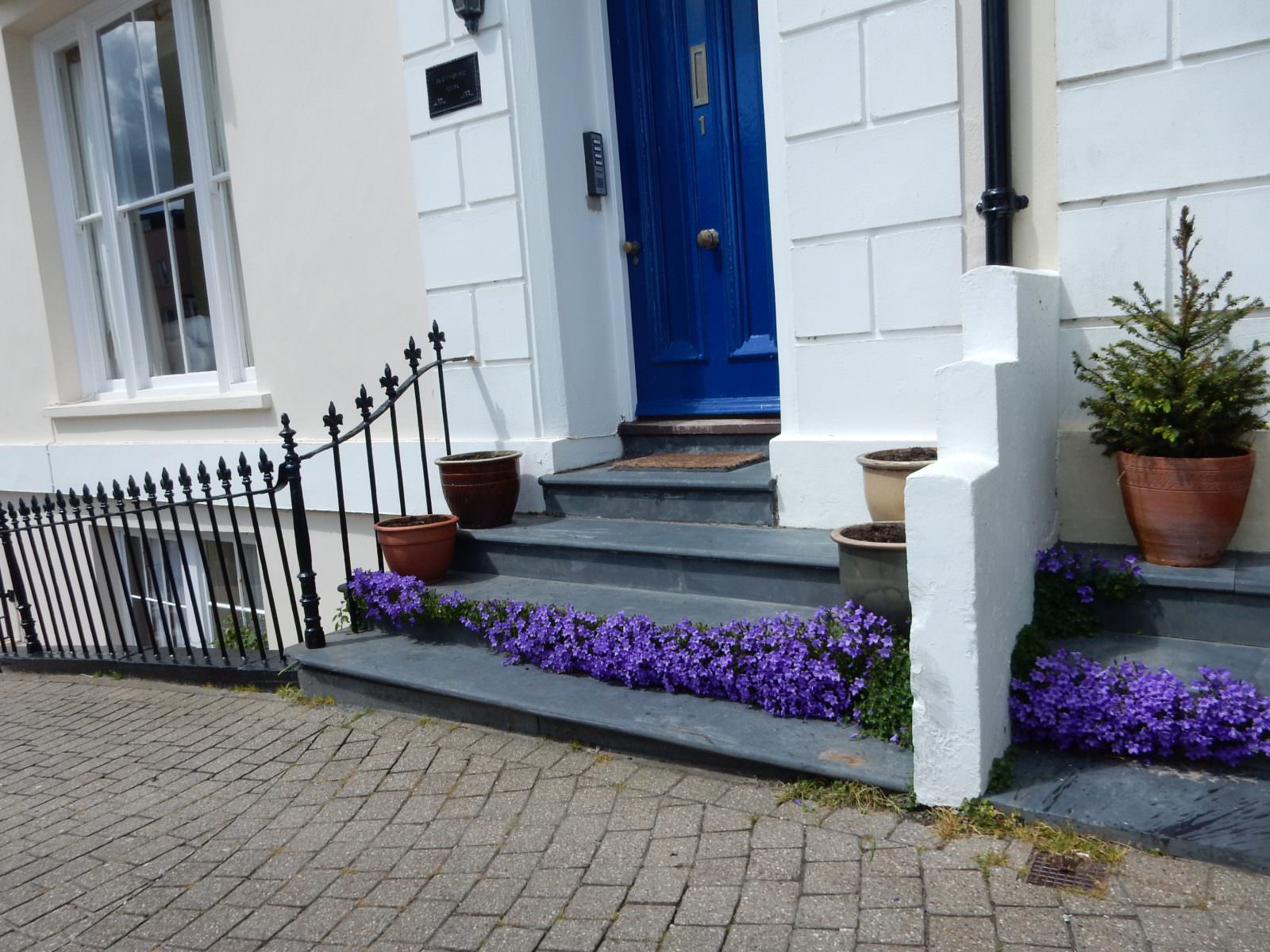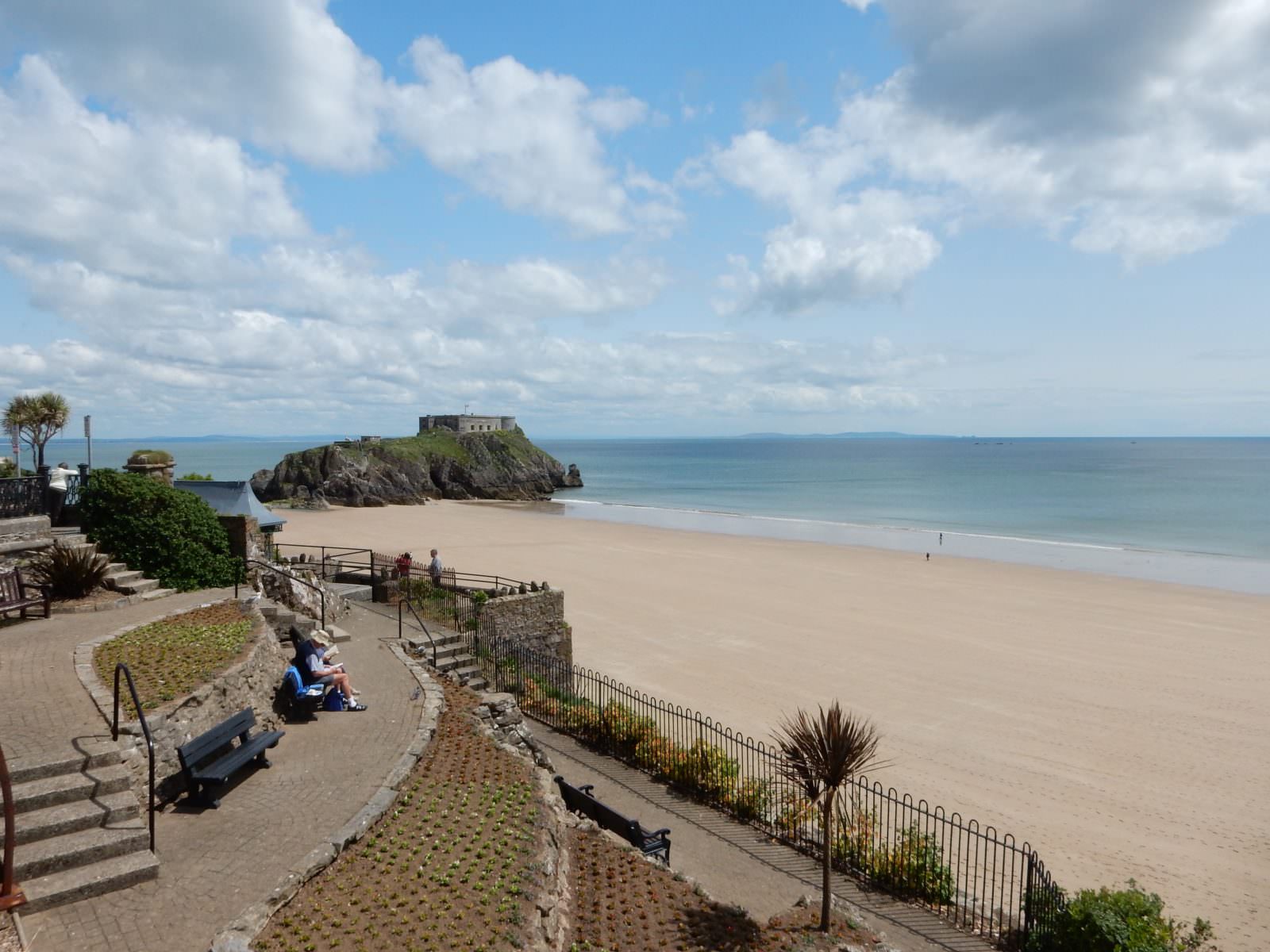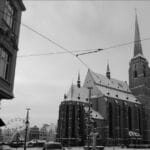Estimated reading time: 9 minutes
Like the small towns of the Cinque Terre, Italy,
Tenby is comprised of artistic stonework and many tall structures.
Like Charleston, it is a riot of colorful buildings lined up for marveling over. Like those cities, Tenby’s unique history makes it a great place to visit … and take a tour.
We wound up in Tenby three times, once more than we intended. The first time we went on purpose to see the town we’d read about since 2014. We enjoyed walking the tidy streets, being humbled in St. Mary’s Church and ambling the lengthy beach.
The second time was because our Pembrokeshire Coast hike took us from Saundersfoot to Tenby. We took delicious refreshment at Caffi Pura located on Upper Frog Street next to the city’s town council offices.
The third time was after our trip to Manorbier Castle. The bus dropped us in Tenby with a couple of hours before the next one scheduled to Saundersfoot. By now, we thought we’d seen Tenby…
Random Encounters are the Best
Jackie dawdled in the corridor of the public works building while I used the restroom. In the less than two minutes I was gone she’d made a new friend. Trevor is the four-time former mayor of Tenby and his self-induced role as tour guide was better than reading Lonely Planet. His demeanor and smooth voice made Jackie think of Anthony Hopkins.
Trevor asked the present mayor if he could show us the “Mayor’s Parlour.” Jackie envisioned major consequences to tagging behind a stranger along a dim corridor and down a dark stair with no idea where we were going. Trevor unlocked double doors with an old skeleton key and took us through the rectangular room set against the Thirteenth Century town wall.
Our history lesson of Tenby began as he explained the fortress walls by age built and took us in a corner turret where we could be inside the wall and yet see the wall. He taught us about the military proficiency and skill of twelfth century long-bow archers. The cross-shaped openings in the city walls were for arrows to get through, because of the method of shooting them with a slight spin. We thought they were religious.










There’s so much more!
After this, Trevor took us to The Market located in the 1860 Town Hall building, to show us the historic mural emblazoned across the wall at ceiling height. Embarrassed, we admitted we’d been in the market the day before to buy Caerphilly Cheese (yummy) and hadn’t noticed the painting.
Politely asking repeatedly if we had time before the bus, Trevor continued to point out more of the town than we saw during previous visits. Jackie said, “If we miss the bus, you’ll have to drive us to Saundersfoot.” Unfazed, he replied, “No problem, my car is right up the street.” Seriously.
Next, we went to St. Mary’s Church and Trevor noted things we may have seen but did not see. The chain mechanism bearing the mass of the baptismal font made the weighty looking thing quite easy to move aside. Trevor directed our gaze to the carvings of the saints along the ceiling beams. We had noticed the faces at beam junctures but missed understanding that the carved images were the saints. He showed us a relief sculpture of Tenby-man Robert Recorde, who invented the “=“ sign.






The journey wasn’t finished as we returned outside and Trevor took us to one of three house chimney’s remaining within the original city walls. It would not have caught our eye, tucked behind structures as it was. He explained that Tenby’s narrow streets, the ground floors of buildings were quite spare, but the first floor would jut out to get as much space as possible in the upper rooms.
All this because Jackie was browsing used books for sale outside the mayor’s office.










**
Read: How Hard is the Pembrokeshire Path Saundersfoot to Tenby?






HI Rose Mary, Wow, how lucky you were to get a personalized tour from a wonderfully friendly local. Couldn’t have asked for better than that. Sounds like he was super knowledgeable and you had a great time and tour. The pictures are great!
Glad you enjoyed the tour, Susan. Trevor was great. I am hoping that somehow this post makes its way to him, so he can know how much we appreciated him!
Tenby looks like a beautiful little town with great architecture and history! I’ve been to Wales on several occasions, but have never been to Tenby. I love looking through all your pictures!
Would love to hear the other places you’ve seen, Rosary. Tenby, Saundersfoot, Fishguard/Goodwick, Newport…so many wonderful places!
I remember doing a summer intern at St Asaph, a small town in North Wales when I was 16. My brother and I would spend the weekend travelling to Rhyl and Prestatyn which are both small, seaside towns and everything was so tranquil and peaceful. I’d spent a few summers on caravan sites all over Wales too, but I can’t remember all the places I’d been to now, most of that was when I was too young to care haha. I’d love to come back to Wales now that I’m older and can appreciate the scenery, history and architectures of such towns and explore even more!
Rosary, it sounds like you have a wonderful bunch of Welsh memories! I’m envious!
That is such a fun story. It is amazing who you can meet, and he does kind of resemble Anthony Hopkins. I think some of the most exciting parts of travel are meeting the locals. That almost teaches you more about a place than its architecture. It definitely seems like this will make a good memory and I’m sure your guide had a good time as well.
Spot on, Erica. It’s always the people who make the place for me. How we interact with the locals can completely change how we view a place. And oh those Welsh!
The buildings look spectacular. These seems to be breathtaking just by the pictures, I can only imagine what they look like in person. Thanks for sharing.
William, you would have loved the Tenby tour as Trevor explained about the archers and longbows and the defensive walls of the city. It was a great history lesson.
All of Pembrokeshire is breathtaking. Can’t wait to get back and be breathless again!
What a great trip to Tenby! The pictures are beautiful. There is something about going on a personal tour. You learn so much more than just reading the books or online. Thanks for sharing your experience.
You’re totally right about that, Sabrina. There is nothing like an individual taking pride in and educating you about their town. What a treat.
What a wonderful looking town! I love the different colored buildings and architecture. You really do take wonderful photos RoseMary and that really adds a lot to your posts. Thank you so much for sharing these beautiful highlights of your trip. 🙂
I’ll give a lot of the picture credit to Jackie, Marty. I luck into good pictures, but she’s got the knack for catching sights at just the right time. Glad you like them!
What a pretty town. The carefully painted houses with boats in the far distance.
Italy has such history and a sense of rich culture. One country I would like to visit.
Your travels always read as so much fun.
Tenby is a lovely little town. I think we were drawn to it because of having been to the Cinque Terre and seeing that whole riot of color.
🙂 We do have fun!
Trevor sounds like he was your destiny! Love the mash up between Tenby and Charleston… I can see in some of the photos where it would be easy to make the comparison. I’d like to have an upper Frog Street in Charleston!
I was hoping you would see what I meant by the Charleston part, Jacquie! It would be fun to rename some boring streets to something far more interesting–here’s to more Frog’s!
Trevor sounds like quite the travel guide gem 🙂 It’s always great to return to a place and get to know even more about it than ever planned.
It sure is, Jeri. I rather think another day in Tenby and we’d have found something else new to explore!
Would hardly have expected to have found a mashup of Cinque Terre and Charleston in Wales. Love the name Upper Frog Street. If you ever find me there I will probably be taking pictures of the street sign.
Ken, I’m trying to remember if we found a Lower Frog Street!
What a wonderful unexpected treat to get such a personalized tour of Tenby, which looks beautiful. Trevor must have been one of the highlights of your trip.
He sure was, Donna! What a gem of a gent!